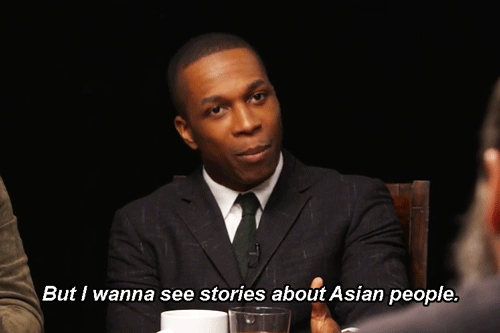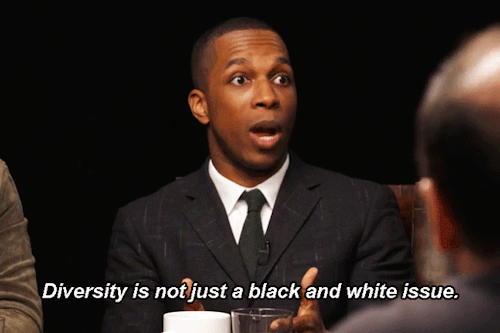The So-called Paradox Of Freedom Is The Argument That Freedom In The Sense Of Absence Of Any Constraining
The so-called paradox of freedom is the argument that freedom in the sense of absence of any constraining control must lead to very great restraint, since it makes the bully free to enslave the meek. The idea is, in a slightly different form, and with very different tendency, clearly expressed in Plato. Less well known is the paradox of tolerance: Unlimited tolerance must lead to the disappearance of tolerance. If we extend unlimited tolerance even to those who are intolerant, if we are not prepared to defend a tolerant society against the onslaught of the intolerant, then the tolerant will be destroyed, and tolerance with them. — In this formulation, I do not imply, for instance, that we should always suppress the utterance of intolerant philosophies; as long as we can counter them by rational argument and keep them in check by public opinion, suppression would certainly be unwise. But we should claim the right to suppress them if necessary even by force; for it may easily turn out that they are not prepared to meet us on the level of rational argument, but begin by denouncing all argument; they may forbid their followers to listen to rational argument, because it is deceptive, and teach them to answer arguments by the use of their fists or pistols. We should therefore claim, in the name of tolerance, the right not to tolerate the intolerant. We should claim that any movement preaching intolerance places itself outside the law, and we should consider incitement to intolerance and persecution as criminal, in the same way as we should consider incitement to murder, or to kidnapping, or to the revival of the slave trade, as criminal.
Karl Popper, The Open Society and Its Enemies
More Posts from Er-zico and Others

The Easterbunny Comes to NGC 4725
At first called “Easterbunny” by its discovery team, officially named Makemake is the second brightest dwarf planet of the Kuiper belt. The icy world appears twice in this astronomical image, based on data taken on June 29 and 30 of the bright spiral galaxy NGC 4725. Makemake is marked by short red lines, its position shifting across a homemade telescope’s field-of-view over two nights along a distant orbit. On those dates nearly coincident with the line-of-sight to the spiral galaxy in the constellation Coma Berenices, Makemake was about 52.5 astronomical units or 7.3 light-hours away. NGC 4725 is over 100,000 light-years across and 41 million light-years distant. Makemake is now known to have at least one moon. NGC 4725 is a famous one-armed spiral galaxy.
Credit: Bob English



Girls from around the world share their first periods
Photos: Plan International
Don’t erase a mixed persons identity because they aren’t exactly 50/50
Don’t erase a mixed persons identity because they are part of a race/ethnicity that you don’t like
Don’t erase a mixed persons identity because they are multiracial but not multiethnic
Don’t erase a mixed persons identity because they grew up with one side of their family
Don’t erase a mixed persons identity because they only know the culture of one side of their family
Don’t earse a mixed persons identity because they don’t ‘look’ mixed
Don’t earse a mixed persons identity because they ‘look’ more like one side
Don’t erase a mixed persons identity because they don’t speak in a certain dialect or slang
Don’t erase a mixed persons identity because they don’t speak their native language(s)
Don’t erase a mixed persons identity because they don’t fit a stereotype
Don’t erase a mixed persons identity because you disagree with them
Just don’t do it at all.









Leslie Odom Jr. discusses diversity at The Hollywood Reporter’s 2016 Tony Award Roundtable








WATCH: 12-Year-Olds Pinpoint Exactly What’s Wrong With How America Sees Race
Nine 12-year-old students who participated in a new video series titled “Being 12.” In the video above, the children – who come from a variety of ethnic backgrounds – share their perspective on growing up in today’s multicultural world and describe disturbing experiences dealing with race and culture.
See the full video their stories are eye-opening.
(GIF Source: WNYC)
A Beautiful Railway Track <3

Untitled by Stanley Huang

Today’s #dalithistory month post is on the Adi-movements of the 1920’s and 30s. For Dalit history, ‘Adi’ ideologies are highly significant as they bear testament to some of our earliest assertion of equal rights, humanity and citizenship on level with other castes.
By the late 19th century, leaders like the social reformer Jyotirao Phule, had created a powerful anti-caste space, upholding non-Brahmanical thought and presenting the dream of a new egalitarian value system on which to model society on. Soon after, the early 20th century saw several archeological discoveries being made in Mohenjodaro and Harappa in the North, pointing to the existence of an unexpectedly ancient civilization that was likely much older than Aryan migrations. These discoveries struck a profound chord with Dalits all over the subcontinent, who immediately began to identify as an indigenous population who were conquered and subsequently oppressed by an alien religion. Although, the evidence for Aryan conquests remains contested, these interpretation was so compelling that such “Adi” (Ancient/Old/Original) movements sprung up all over the nation completely independently of each other.
The names of these movements are telling - Ad-Dharm in Punjab, Adi-Hindu in U.P. and Hyderabad, Adi-Dravida, Adi-Andhra and Adi-Karnataka in South India - all indicating a common claim to nativity and original inhabitation.
The provocative effects of the Adi-movements are best illustrated by an early Maharashtrian pre-Ambedkar Dalit leader, Kisan Faguji Bansode, who warned his caste-Hindu friends in 1909, stating: “The Aryans - your ancestors - conquered us and gave us unbearable harassment. At that time we were your conquest, you treated us worse than slaves and subjected us to any torture you wanted. But now we are no longer your subjects, we have no service relationship with you, we are not your slaves or serfs… We have had enough of the harassment and torture of the Hindus.”
In Andhra, the process was accelerated by the commercialized coastal areas that produced both a mobile Dalit agricultural class and a small educated section that produced leaders Bhagyareddy Varma and Arigyay Ramswamy who managed to mobilize nearly a third of the Malas and Madigas of the Madras Presidency to state their identity in the official census of 1931 as Adi-Andhra.
In Tamil Nadu, some Dalits identified themselves as Adi-Dravidas while Telugu and Kannada counterparts also identified as Adi-Hindu or Adi-Karnataka. In the north, in Uttar Pradesh, an untouchable ascetic, who radically called himself Acchutananda, began to organize an Adi-Hindu identity, arguing, “The untouchables, are in fact Adi-Hindu, i.e. the original and autochthonous Nagas or Dasas of the north and the Dravidas of the south, the undisputed, heavenly owners of Bharat.”
In Punjab, Mangoo Ram Mugowalia, a Dalit who had left the Gaddar movement, unable to stand the Casteism within it, began the Ad-Dharmi movement. By 1926, he had influenced a huge number of Dalits to boldly register themselves a separate “quaum” (religious group) in Hoshiarpur despite the threat of imminent violence. By the 1931 census, nearly 500,000 Dalits registered themselves as Ad-Dharmis all over Punjab.
To counter a growing ‘Adi’ consensus, Brahmins began actively renaming Dalits, ‘Panchama’ (the Fifth). Gandhi used it in his Young India for a long time. Many Dalits of the day strongly pushed back against the term insisting the idea of ‘Panchama’ was derogatory and only served to attenuate the age-long hyper-oppressive framework of Hindu society and solidify their position outside the caste order.
Dear Readers,Welcome to my personal blog. I'm Sabyasachi Naik (Zico,24).An Agnostic,deeply NON religious(atheist), and Secular Progressive Civil Engineer . I'm brown and proud to be an Indian tribe. “I want to say a word to the Brahmins: In the name of God, religion, sastras you have duped us. We were the ruling people. Stop this life of cheating us from this year. Give room for rationalism and humanism.” ― Periyar E.V. Ramasamy
198 posts